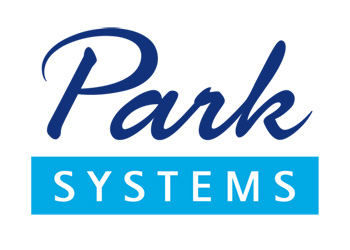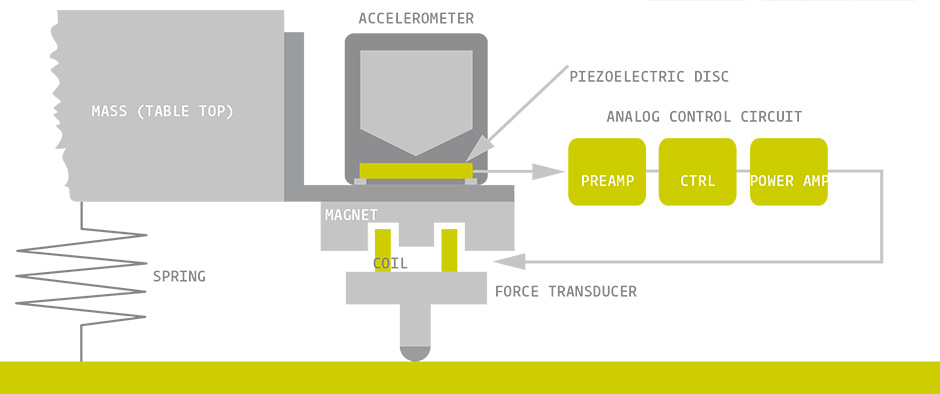Environmental disturbances such as vibrations and acoustic noise can highly affect research and production processes. Therefore, vibration control is absolute key for conducting reliable and precise high-resolution measurements, while operating sensitive instrumentation.
This is particularly important for experiments or processes in which the typical amplitudes of the ambient vibration and the dimensions of investigated or manufactured structures fall in the same range.
Despite all structural differences, the essence of vibration isolation systems is mostly similar. Passive vibration isolation systems consist of a spring and damper, a so-called dashpot. The spring ought to soften vibrations and disturbances, whereas the damper terminates the oscillation amplified within the system. The combination of mass and spring is known as a mechanical low-pass. The mechanical response of the spring-mass system decreases significantly with frequencies above the resonance frequency, and the damper reduces the vibration amplitude especially within the resonance range.
Due to the low-pass characteristics, passive damping systems show very low resonance frequencies, usually ranging between 2-5 Hz. Thus, pneumatic systems amplify vibrations from approx. 1 to 8 Hz instead of damping them.
The solution to this problem is active vibration control (AVC). Thereby, the signals acquired by extremely sensitive vibration detectors are analyzed by electronic circuitry driving electro-dynamic actuators, which instantaneously produce a counter-force to compensate for the vibration.
Therefore, active vibration isolation systems have neither resonance nor amplification of vibrations at any frequency, which is a significant advantage over passive isolation systems.














